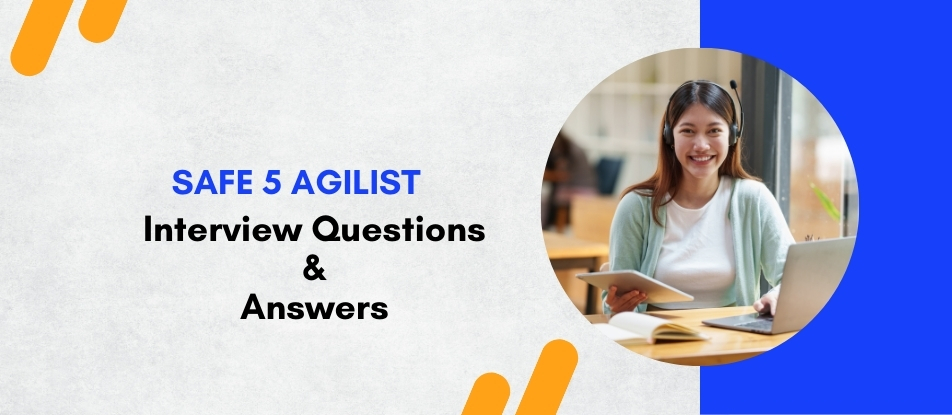
SAFe 5 Agilist training provides a comprehensive understanding of the Scaled Agile Framework (SAFe) to help organizations achieve business agility. This course focuses on key SAFe principles and practices, including Agile Release Trains (ARTs), Lean-Agile leadership, and Lean Portfolio Management. Participants will learn to apply SAFe’s core values and Lean-Agile mindset to manage large-scale Agile projects, optimize workflows, and drive continuous improvement, positioning their organization for long-term success in a competitive market.
SAFe 5 Agilist - Interview Questions Answers - For Intermediate
1. Describe the concept of ‘Communities of Practice’ in SAFe.
Communities of Practice (CoPs) are groups of individuals that share a concern or a passion for something they do within the organization, and learn how to do it better as they interact regularly. This practice helps spread knowledge and improve skills across the enterprise.
2. What is the importance of the ‘Continuous Delivery Pipeline’ in SAFe?
The Continuous Delivery Pipeline represents the workflows, activities, and automation needed to move a new piece of functionality all the way from ideation to an on-demand release. It emphasizes the ability to develop, test, deploy, and release software more quickly and reliably to meet customer demands and improve business outcomes.
3.How do Epics differ from Features in SAFe?
In SAFe, Epics are large bodies of work that can be broken down into features, and those features can be broken down into user stories. Epics are typically delivered over multiple Program Increments and can span across various teams and ARTs.
4. What role does the System Architect/Engineer play in SAFe?
The System Architect/Engineer is responsible for defining and maintaining the technical vision of the solution and aligning the team’s efforts to ensure the architectural integrity and consistency of the final product throughout the development process.
5. Explain the SAFe principle of ‘Decentralize Decision-Making’.
Decentralizing decision-making in SAFe is about empowering individuals who are closest to the work to make decisions. This speeds up the process and leverages local knowledge, while still aligning with the broader goals and strategies of the organization.
6. How is the ‘Innovation and Planning’ iteration used in SAFe?
The Innovation and Planning (IP) iteration is a buffer that provides time for innovation, continuing education, PI planning, and Inspect and Adapt events. It allows the teams to address maintenance, reduce technical debt, and explore new ideas.
7. What is the function of the Lean UX in SAFe?
Lean UX in SAFe focuses on applying lean principles to user experience design. It emphasizes collaborative and iterative design, minimal viable products (MVPs), and customer feedback loops to validate ideas quickly and effectively.
8. How do teams handle conflicts in SAFe environments?
Teams in a SAFe environment are encouraged to address conflicts directly and collaboratively, using agile principles such as face-to-face communication and focusing on the problem, not the individuals. Facilitators or RTEs can help mediate if necessary.
9. Describe the ‘Economic Framework’ used in SAFe.
The Economic Framework in SAFe provides a set of decision-making guidelines that align with the economic priorities of the organization. It helps stakeholders make trade-off decisions by understanding the economic impact of delays, cost of development, and value delivery.
10. What are 'Guardrails' in SAFe?
Guardrails are guidelines that provide clear boundaries within which teams can operate safely and effectively. They ensure fiscal responsibility and align the technical decisions with the business’s broader strategic goals.
11. Can you explain the importance of Metrics in SAFe?
Metrics in SAFe are essential for measuring and understanding the health, progress, and performance of the teams and the value stream. They inform continuous improvement and ensure alignment with strategic objectives.
12. What is a ‘Solution Context’ in SAFe?
Solution Context refers to the environment in which the solution operates, including users, regulations, hardware, and operational environments. Understanding this context is crucial for designing appropriate solutions that meet real-world demands.
13. How does SAFe address Portfolio Governance?
Portfolio Governance in SAFe involves coordinating and aligning initiatives at the portfolio level to ensure that investments are aligned with business strategy and resources are appropriately allocated. It includes funding mechanisms, audit and compliance checks, and portfolio performance monitoring.
14. What is the role of a Scrum Master in a SAFe environment?
In SAFe, a Scrum Master helps facilitate Scrum processes for their team and ensures effective SAFe implementation at the team level. They act as a servant leader, helping the team optimize their workflow and interactions for better dynamics and productivity.
15. How is feedback managed and incorporated in SAFe?
Feedback in SAFe is a continuous loop at multiple levels—from team retrospectives to system demos and customer feedback. It is critical for driving the adaptiveness of the framework, ensuring solutions meet user needs, and fostering continuous improvement across all processes.
SAFe 5 Agilist - Interview Questions Answers - For Advanced
1. Describe how SAFe integrates market feedback into its practices.
SAFe integrates market feedback through multiple mechanisms that ensure rapid response to changing customer needs and market conditions. The framework incorporates the Lean Startup Cycle, which emphasizes MVPs (Minimum Viable Products) to validate hypotheses about a product or feature in the real market as early as possible. Regular System Demos and the Solution Demo provide a platform for obtaining feedback from stakeholders and customers on every iteration and Program Increment, respectively. This feedback is crucial for the iterative decision-making process about what features to continue developing, adjust, or discard, thereby ensuring that the product development is aligned with market demands.
2. What are the SAFe principles that guide the integration of non-software teams in a predominantly software-oriented SAFe environment?
SAFe extends beyond software to include non-software teams through principles such as 'Apply systems thinking' and 'Organize around value'. These principles encourage the integration of various functions—like hardware, marketing, and compliance—that must collaborate to deliver solutions. SAFe promotes organizing these cross-functional teams around value streams, which focus on delivering value to the customer regardless of the type of work involved. This holistic approach ensures that all aspects of the product development lifecycle are aligned and contribute towards a common goal, facilitating effective collaboration and delivery across diverse teams.
3. Explain the role of Metrics and KPIs in driving business outcomes in SAFe.
Metrics and KPIs in SAFe are pivotal for driving business outcomes as they provide a quantitative basis for decision-making and performance assessment. Key metrics in SAFe include Predictability Measure, Flow Efficiency, and Program Predictability Index, which help assess the health and efficiency of Agile Release Trains and the overall Agile enterprise. These metrics allow leaders and teams to measure their progress against strategic objectives, making adjustments as necessary to improve performance and outcomes. By focusing on outcomes rather than outputs, SAFe encourages organizations to measure what truly matters, ensuring that efforts are aligned with the overall business goals.
4. How does the SAFe framework ensure that governance and compliance requirements are met in regulated industries?
SAFe addresses governance and compliance in regulated industries by embedding these requirements into the development process. The framework's built-in quality practices ensure that compliance is considered at each step of the product development lifecycle, not just at the end. For instance, the Definition of Done for each team and the overall Solution Intent can include compliance and regulatory requirements. SAFe’s planning increments allow for regular reviews and audits to ensure that the solution adheres to necessary standards. Additionally, SAFe’s risk management practices and Lean Portfolio Management provide a structured approach to managing compliance risks at the portfolio level.
5. Discuss the significance of the Lean-Agile Leadership competency in the successful transformation to SAFe.
The Lean-Agile Leadership competency is fundamental to a successful SAFe transformation. This competency emphasizes that leaders at all levels must exhibit the behaviors of Lean and Agile thinkers—those who embrace the principles of the Agile Manifesto and lean thinking. Leaders are expected to lead by example, facilitate change, and empower teams to achieve higher levels of performance. This involves not only supporting the adoption of SAFe practices but also fostering a culture of continuous improvement, innovation, and learning. Effective Lean-Agile leaders create an environment where change is embraced, and teams are motivated to drive the transformation forward.
6. What strategies does SAFe recommend for managing large portfolios and ensuring they remain aligned with business objectives?
SAFe recommends several strategies for managing large portfolios effectively, including the implementation of Lean Portfolio Management, which involves three main activities: Strategy and Investment Funding, Agile Portfolio Operations, and Lean Governance. These practices ensure that the portfolio is dynamically adjusted based on feedback and changing business priorities. Strategic themes guide investment decisions, and a portfolio kanban system is used to manage the flow of portfolio epics, providing visibility and allowing for pivot or persevere decisions based on economic outcomes. Regular portfolio sync meetings ensure alignment and coordination across portfolio, large solution, and program levels.
7. How does the SAFe framework support a digital transformation initiative in a traditional organization?
SAFe supports digital transformation initiatives by providing a structured approach to scaling Agile practices across an organization. It facilitates the shift from traditional hierarchical structures to a network of empowered Agile teams organized around value streams. This transformation involves not only adopting new technology but also fundamentally changing the organization's culture, processes, and business models to be more responsive and customer-centric. SAFe’s principles and practices, such as Lean Portfolio Management and Organizational Agility, guide this transformation, ensuring that the organization can adapt to digital disruptions and thrive in a digital economy.
8. Can you detail the process of Value Stream Mapping in SAFe and its benefits?
Value Stream Mapping in SAFe is a tool used to visualize and understand the flow of value through processes in order to identify delays, bottlenecks, and inefficiencies. The process involves defining the current state of a value stream, mapping out all the steps involved in delivering value to the customer, and identifying waste and improvement opportunities. The steps include identifying the product family, drawing the current state map, analyzing the flow, and designing the future state map with improved flow and reduced waste. The benefits of Value Stream Mapping include enhanced visibility into the workflow, identification of non-value-added activities, streamlined processes, and improved coordination among teams, ultimately leading to faster delivery and higher-quality products.
9. How does SAFe handle the challenge of maintaining alignment across multiple teams and ARTs working on the same solution?
SAFe handles alignment across multiple teams and ARTs through practices such as PI Planning, System Demos, and the synchronization of work via the Program Board. PI Planning is a critical event where all teams within an ART come together to plan and align their work for the upcoming Program Increment. The Program Board visually maps dependencies and identifies potential risks, ensuring that all teams are on the same page. Regular System Demos provide a platform for showcasing integrated work from all teams, receiving feedback, and making necessary adjustments.
10. Discuss the concept of 'Release on Demand' in SAFe and its impact on business agility.
'Release on Demand' in SAFe refers to the ability to release value to customers at any time, based on market demand rather than a fixed schedule. This concept is supported by the Continuous Delivery Pipeline, which includes Continuous Exploration, Continuous Integration, Continuous Deployment, and Release on Demand. By enabling frequent releases, organizations can respond swiftly to customer feedback, market changes, and competitive pressures. This increases business agility by allowing the organization to pivot quickly, reduce time-to-market, and deliver higher-quality products that better meet customer needs.
11. Explain the role and importance of Enabler Epics in SAFe.
Enabler Epics in SAFe are significant initiatives that support the development of business epics by building the necessary infrastructure, architecture, and capabilities. They can include technical enablers, such as creating a new platform or upgrading tools, and infrastructure enablers, like setting up a new environment. Enabler Epics ensure that the technical foundation is in place to support current and future business needs, reducing technical debt and enabling smoother, more efficient development processes. They are crucial for maintaining the health and scalability of the system, ensuring that business features can be delivered without significant rework or delays.
12. How does SAFe's approach to risk management differ from traditional project management?
SAFe’s approach to risk management is integrated into the agile practices and continuous delivery process. Unlike traditional project management, which often handles risk as a separate activity, SAFe incorporates risk identification and mitigation into daily activities and ceremonies. Risks are identified and tracked during PI Planning and addressed continuously through regular sync meetings, retrospectives, and the Inspect and Adapt workshop. SAFe uses tools such as the ROAM (Resolved, Owned, Accepted, Mitigated) framework to manage risks, fostering a proactive and collaborative approach to risk management that adapts dynamically to changing project conditions.
13. What are the main components of the Continuous Delivery Pipeline in SAFe and how do they interact?
The Continuous Delivery Pipeline in SAFe consists of four main components: Continuous Exploration (CE), Continuous Integration (CI), Continuous Deployment (CD), and Release on Demand. CE involves exploring and defining new features and capabilities based on customer needs and market research. CI focuses on integrating and testing new code frequently to ensure it is always in a deployable state. CD automates the deployment of the code to production environments, ensuring it is ready for release. Finally, Release on Demand allows the organization to release new features to customers whenever it makes business sense.
14. How does SAFe promote a culture of continuous improvement and learning within an organization?
SAFe promotes a culture of continuous improvement and learning through several practices, including the Inspect and Adapt (I&A) workshop, regular retrospectives, and a focus on relentless improvement. The I&A workshop provides a structured opportunity for teams to reflect on their performance, identify areas for improvement, and implement changes. Regular retrospectives at the team level encourage ongoing reflection and adjustment of practices. SAFe also emphasizes the importance of metrics and feedback loops to measure performance and drive continuous learning. This culture of continuous improvement is further reinforced by leadership’s commitment to fostering an environment where experimentation, learning from failures, and innovation are encouraged.
15. Describe the concept of the Architectural Runway in SAFe and its significance for Agile Release Trains (ARTs).
The Architectural Runway in SAFe refers to the existing code, components, and technical infrastructure necessary to support the implementation of new features without excessive redesign or delay. It is a critical enabler for Agile Release Trains (ARTs) as it ensures that the technical foundation is in place to support current and upcoming work. The Architectural Runway is continuously extended through the implementation of Enabler Epics and Stories, which build out the necessary infrastructure and reduce technical debt. This concept is significant because it allows ARTs to deliver new features rapidly and sustainably, maintaining a balance between developing new functionality and ensuring the system’s technical health and scalability.
Course Schedule
| Dec, 2025 | Weekdays | Mon-Fri | Enquire Now |
| Weekend | Sat-Sun | Enquire Now | |
| Jan, 2026 | Weekdays | Mon-Fri | Enquire Now |
| Weekend | Sat-Sun | Enquire Now |
Related Courses
Related Articles
- Siemens PCS7 DCS: The Future of Safe and Intelligent Process Control
- How Can Ansible Training Boost Your DevOps Career Growth?
- Top 20 SP3D Training Interview Questions
- Workday HCM Certification Cost - A Handbook for Ambitious Professionals
- Why Choose SAS Clinical Training for a Future in Data Analysis?
Related Interview
- Administering Microsoft SQL Server 2022 Interview Questions Answers
- Certified Kubernetes Administrator (CKA) Interview Questions Answers
- SAP Financial Contract Accounting (FI-CA) Training Interview Questions Answers
- Certified Scrum Developer Training Interview Questions Answers
- Plant Design using CADWorx Plant Professional Training Interview Questions Answers
Related FAQ's
- Instructor-led Live Online Interactive Training
- Project Based Customized Learning
- Fast Track Training Program
- Self-paced learning
- In one-on-one training, you have the flexibility to choose the days, timings, and duration according to your preferences.
- We create a personalized training calendar based on your chosen schedule.
- Complete Live Online Interactive Training of the Course
- After Training Recorded Videos
- Session-wise Learning Material and notes for lifetime
- Practical & Assignments exercises
- Global Course Completion Certificate
- 24x7 after Training Support


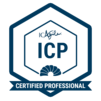






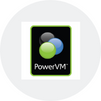
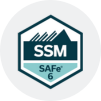
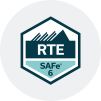
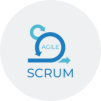
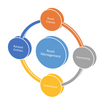

 Join our Live Instructor-Led online classes delivered by industry experts
Join our Live Instructor-Led online classes delivered by industry experts